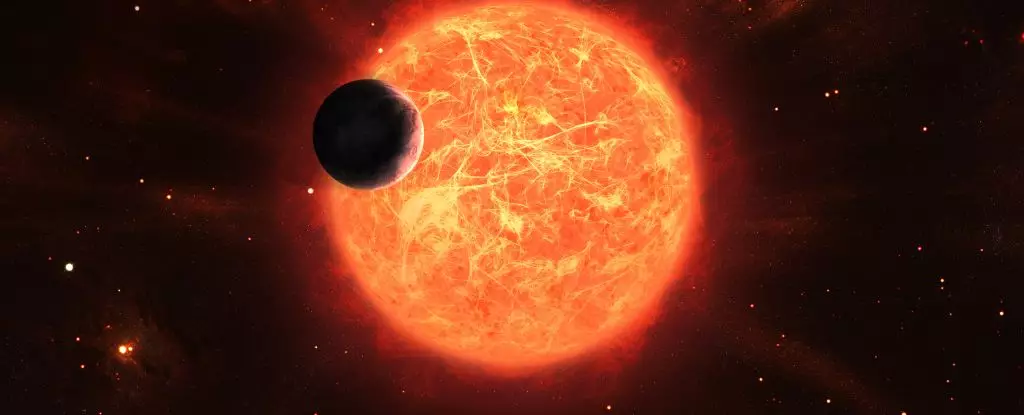The search for extraterrestrial life and the existence of planets similar to Earth continues to occupy the minds of astronomers and astrophysicists alike. A recent discovery has unlocked a new perspective in this ongoing quest, spotlighting a planet situated around a white dwarf—a stellar remnant that embodies the ultimate fate of our own Sun. This revelation, while indicative of future possibilities for our own planet’s survival, simultaneously paints a sobering picture of a world shaped by the death throes of its host star.
The newly identified exoplanet is about 1.9 times the mass of Earth and orbits a white dwarf at a distance twice that of our planet from the Sun. The implications of this arrangement stretch far beyond mere proximity. White dwarfs are the remnants of stars that have exhausted their nuclear fuel, entering phases of expansion as red giants before shedding their outer layers and left with only the core. This process is violent and transformative, leading astronomers to speculate on the survival probabilities of planets in similar orbits.
Astrophysicist Keming Zhang of the University of California leads this research, which not only provides insight into the physical characteristics of this distant planet but also emphasizes the evolutionary path of solar systems post-stellar death. With this in mind, astronomers are afforded a rare opportunity to analyze the fate of life-sustaining planets after their stars have transitioned through significant evolutionary phases.
The fate of the exoplanet serves as a potential mirror for our Solar System’s future. As the Sun embarks on its own transformation into a red giant, projected to occur in approximately five billion years, there is considerable uncertainty surrounding the survival of Earth. Current models speculate that, as the Sun expands, it could envelop planets within its grasp, leading to their destruction. However, the discovery of this distant exoplanet suggests a glimmer of hope; it hints that some celestial bodies may endure even amidst the catastrophic changes induced by their host stars.
Zhang highlights that the discovery suggests a more optimistic view of Earth’s destiny. “The simplest explanation is that the planet survived through the red giant host star,” he notes. This revelation challenges conventional models that predict bleak outcomes for habitable planets, raising questions about the actual mass loss rates of stars during their red giant phases.
A fascinating mechanism known as microlensing facilitated the discovery of this planetary system. This gravitational phenomenon occurs when the light from a distant star bends around a massive object, such as a white dwarf, leading to temporary magnification. The researchers observed this effect from a distance of approximately 4,200 light-years away, with a large star along the same line of sight creating an extraordinary gravitational lens. The near-perfect alignment resulted in the distant star’s light being magnified by more than 1,000 times, which allowed researchers to deduce the existence and characteristics of the surrounding exoplanet and a brown dwarf—a hybrid type of celestial body too massive to be classified strictly as a planet but insufficiently massive to be counted among true stars.
This innovative approach underscores the value of microlensing for identifying and studying worlds beyond our immediate cosmic neighborhood. It potentially opens the door to finding other Earth-like planets in similarly elusive conditions.
Considering the evolutionary prospects for Earth and similar planets, Zhang notes that as the Sun progresses into its red giant phase, the habitable zone will shift towards the outer Solar System, enabling moons of gas giants like Jupiter and Saturn to potentially become oceans of life. However, by that time, Earth’s conditions may be so drastically transformed that life as we know it could cease to exist, or it may have evolved to adapt to a dramatically different environment.
As the science of exoplanet exploration progresses, the implications of these discoveries are vast. Each new finding not only enriches our understanding of the cosmos but redefines our expectations of life’s resilience in the universe. The challenges that lie ahead, from the evolution of the Sun to the fate of Earth, highlight our planet’s precarious existence amongst the stars and remind us of the deep interconnectedness of cosmic evolution.
In the grand tapestry of the universe, this thrilling discovery serves as both a cautionary tale and a beacon of hope for the future, reinforcing the notion that life’s persistence may thrive against all odds, even in the most inhospitable environments.


Leave a Reply